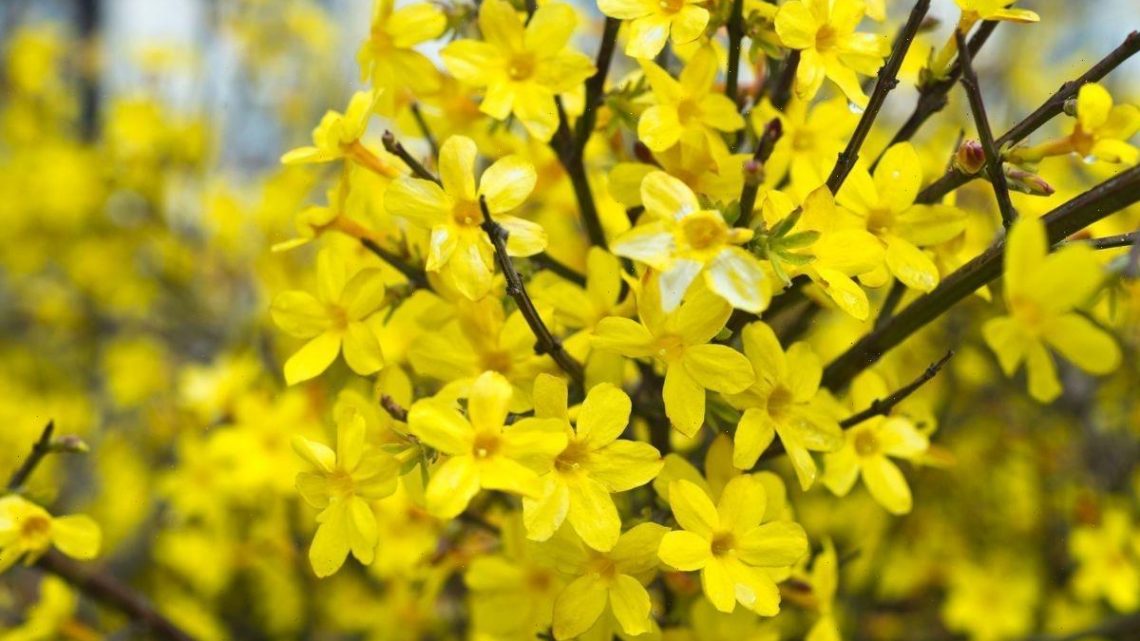
Alan Titchmarsh shares his favourite winter plants to boost gardens
11/20/2022This Morning: Daisy talks about winter gardening tasks
We use your sign-up to provide content in ways you’ve consented to and to improve our understanding of you. This may include adverts from us and 3rd parties based on our understanding. You can unsubscribe at any time. More info
Winter is often thought to be a quiet time in the gardening world where there’s not much life in gardens, but there are many plants that thrive during this time of year. Sharing with Gardeners’ World, Alan Titchmarsh has explained how Britons can light up their garden in the depths of winter with a few magnificent plants – perfect for giving your garden some winter colour.
Alan said: “Don’t let your garden peter out in winter – boost your garden with some of these vibrant seasonal stars. It’s easy to see this time of year as an off season, but there are lots of plants that come into their own in winter.
“It’s not just flowers, either – you can also grow plants with attractive seedheads, berries and evergreen colour, such as hylotelephium spectacle, pyracanthas and hollies.”
Alan’s favourite plants for winter colour
Heathers
Heathers are classified as low growing evergreen shrubs. Some are miniature forms growing only a few centimetres in height whilst others can attain three to four metres in the UK.
It is Erica heathers that typically flower in winter. They are more tolerant of neutral to alkaline soils and will grow well in soils with a pH of seven or higher, as long as the soil has been enriched with organic matter.

The gardening pro said: “The willingness of winter-flowering heathers (Erica carnea) to bloom in the darker months is impressive. Grow in a large sink or trough if you can’t fit them into your borders.”
Winter jasmine
Winter jasmine is a popular and reliable shrub, valued for its cheery, bright yellow flowers, which appear on bare stems. The hardiest of the jasmines, unlike others, its blooms are unscented, but they make up for this by appearing very early in the season – sometimes as early as January.
Alan favours these plants due to their hardiness and colour. He said: “Frequently grown in gardens, winter jasmine certainly earns its keep. The bare, arching stems of this wall scrambler are studded with starry bright yellow flowers to lift the spirits on the coldest days.”
Snowdrops
Snowdrops are hardy perennial, winter-flowering plants that are often heralded as the first sign of spring. Snowdrops bloom as early as January and February whatever the weather – they will even push through frozen, snow-covered ground.
DON’T MISS
Leave washing machine seals ‘sparkling’ with 4p kitchen item [TIPS]
Melt away ‘tough’ oven glass stains ‘without scrubbing’ in 5 minutes [COMMENT]
5 ‘effective’ methods to prevent cats and foxes pooing in your garden [EXPERT]
The gardening expert noted that the plants can lighten the darkest of gardens. He said: “With their delightfully dainty, nodding flowers, snowdrops light up a shady bed. You can also naturalise them in grass, where the colony will grow year on year if you leave the foliage intact for a few weeks after flowering.”
Dogwoods
The Cornus (dogwood) genus includes a wonderful array of trees and shrubs. Some have winter flowers, others offer stunning bracts in late spring, colourful winter stems, striking autumn foliage or berries.
Cornus trees are perfect specimens for a small garden. In almost every month of the year there’s interest from one cornus or another.
Alan pointed out: “Cornus sanguines, midwinter fire, is just about the brightest of the coloured-stemmed dogwoods. Its year-old shoots are a stunning blend of amber and pink. Prune dogwoods in early spring to encourage more new stems.”

Cyclamen
Cyclamen brighten the dark autumn and winter days and are a sure sign spring is not far off. They can be tender perennials or hardy perennials. It’s normally the more tender cyclamen species that are used as houseplants, but provided they’re kept cool in bright, airy places, hardy cyclamen also make excellent temporary pot plants. They’ll come to no harm decorating a table or window ledge for a month before you plant them out in the garden.
Alan shared that these plants “can’t fail” when it comes to adding colour to gardens. He said: “From vivid magenta through the pinks to pure white, the flowers of cyclamen coum are so untypical of winter that they can’t fail to delight. Tough as old boots, thriving in dappled shade below trees and shrubs.”
Sweet box
Sweet box plants are a small group of bushy evergreen shrubs with glossy, wavy foliage, pale on the underside. They produce dainty, sweetly scented, creamy white flowers in winter followed by glossy red, purple or black berries, perfect for adding colour and interest in the colder months of the year.
The gardening guru commented: “The white, whiskery flowers of evergreen sarcococca confusa might not be spectacular, but their fragrance will quite literally stop you in your tracks. Cut a few sprigs to bring inside and enjoy close up.”

Corkscrew hazel
Corylus avellana, otherwise known as corkscrew hazel, is a small hazel with contorted stems that stand out in winter against the clear blue sky. From late winter it bears golden-yellow catkins, before fresh green, twisted leaves appear.
Alan said: “This plant is an entertaining shrub to have in winter, when its crazily twisted bare stems are adorned with dangling, bright sulphur-yellow catkins. Children love it, and that’s one of its greatest attributes.”
Ornamental quince
The ornamental quince is a small, pretty shrub with lots to offer to any garden.
Alan explained how this plant can light up any garden with its stunning blossoms. He said: “With its white, pink or rich red blossom, lights up a wall or fence in winter. Tie in the branches of this shrub to give as much coverage as you need, and use it as a green background for summer blooms.”
Source: Read Full Article

